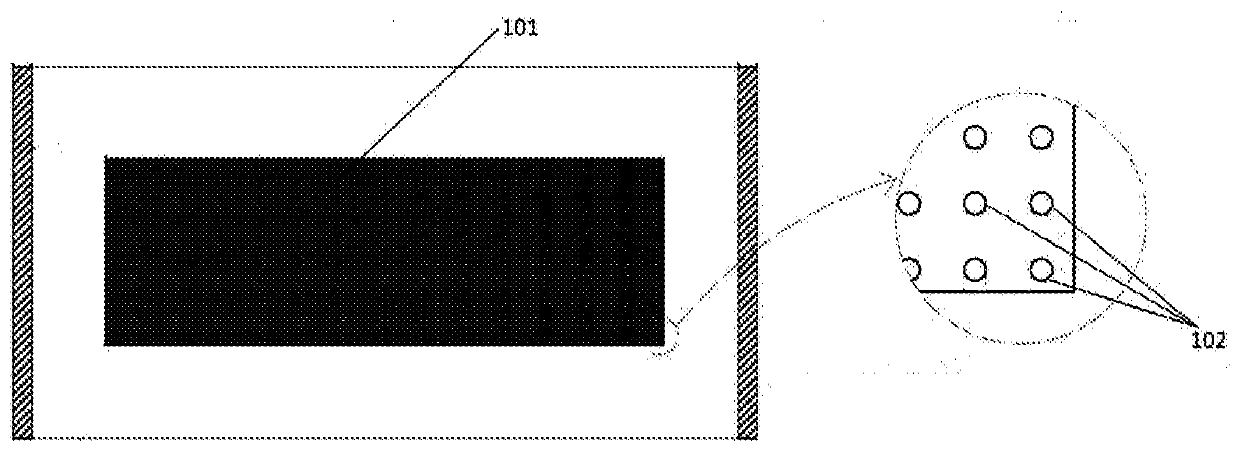Device and method for separating mobile cells
A mobile cell and cell technology, applied in separation methods, animal cells, vertebrate cells, etc., can solve problems such as sample contamination, inability to use in the field or consulting room, material loss, etc.
- Summary
- Abstract
- Description
- Claims
- Application Information
AI Technical Summary
Problems solved by technology
Method used
Image
Examples
example 1
[0053] Device test D, E and F with glass film
[0054] On a glass membrane, the mobile cell separation device (MXM) of the present invention includes two reservoir plates separated by a 130±40 μm thick glass membrane plate, which has tapered channels with a diameter of about 1 mm. The length of the glass width, a first diameter of 15 μm (inlet) and a second diameter of 8 μm (outlet). First place the HEPES recovery medium HamF10 1X, supplement with SSS, and place penicillin / streptomycin in the recovery reservoir (second reservoir); then, after processing according to the WHO2010 protocol, semen samples D, E and F It is placed in the remaining storage (first storage).
[0055] In this embodiment, the membrane is 1cm×2cm and the density is 6600 perforations / cm 2 . The maximum volume capacity of the first reservoir for placing the sample to be processed is 3 mL, and the maximum capacity of the second reservoir is 1 mL.
example 2
[0057] Tests A, B, C, and D for devices with PET film
[0058] A film made of PET is formed with 2500 channels, and the length of each channel is 200 μm. The conical channel includes a first (inlet) diameter of 15 μm and a second (outlet) diameter of 10 μm. The PET film is 1cm×2cm. The storage is the same as the storage corresponding to the glass film in Example 1. First place the HEPES recovery medium Ham F10 1X, supplement with SSS, and place penicillin / streptomycin in the recovery reservoir (second reservoir); then, after processing according to the WHO2010 protocol, semen samples A, B, C and D are placed in the remaining storage (first storage).
[0059] For these two examples, the procedure for using the device of the present invention is as follows:
[0060] Step 1-Place the HEPES medium Ham F10 1X (0.6-0.7 ml) to reach the level of the second reservoir. Load Ham F10 1X with HEPES with a straw-tip Buster transfer tube that can enter the analysis cup; when it is filled, the...
PUM
| Property | Measurement | Unit |
|---|---|---|
| volume | aaaaa | aaaaa |
| volume | aaaaa | aaaaa |
| width | aaaaa | aaaaa |
Abstract
Description
Claims
Application Information
 Login to View More
Login to View More - R&D
- Intellectual Property
- Life Sciences
- Materials
- Tech Scout
- Unparalleled Data Quality
- Higher Quality Content
- 60% Fewer Hallucinations
Browse by: Latest US Patents, China's latest patents, Technical Efficacy Thesaurus, Application Domain, Technology Topic, Popular Technical Reports.
© 2025 PatSnap. All rights reserved.Legal|Privacy policy|Modern Slavery Act Transparency Statement|Sitemap|About US| Contact US: help@patsnap.com



